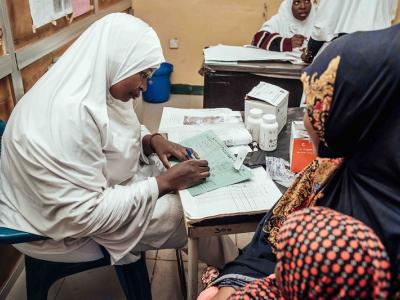Cuba and the Caribbean island nation of Dominica yesterday reported their first local Zika virus cases, marking a steadily expanding outbreak, as weather scientists today unveiled risk estimates for 50 US cities, with the main hot spots in the South and East.
Meanwhile, Brazilian health officials reported 240 more suspected microcephaly cases.
Affected Americas locations rise to 33
Cuban health officials announced the country's first local case last night, in a 21-year-old Havana woman who is hospitalized with headache, fatigue, and other symptoms, the Associated Press (AP) reported today, citing Cuba's state media.
Cuba had earlier reported a handful of travel-linked cases, especially from Venezuela, according to the AP. In mid February Cuba announced a Zika virus response plan that included the deployment of 9,000 military troops and 200 police officers to battle the Aedes mosquito that spreads the virus.
Elsewhere, Dominica, a country of about 72,000 that is roughly 1,000 miles southeast of Cuba, yesterday announced its first confirmed case in an individual with no travel history, according to a statement on the government's Web site. No other details were available about the patient, other than that he or she has recovered and is at home.
Health minister Kenneth Darroux, MD, said in the statement that local cases had already been detected on the neighboring islands of Guadeloupe and Martinique. He urged residents not to panic and said the government will meet to refine its strategy for battling Zika virus.
South, East at highest risk
Conditions will be ripe for Zika virus outbreaks in many US cities—as far north as New York City and as far west as Los Angeles—during the peak summer months, according to weather researchers who released a risk assessment today that covers 50 cities.
The team, from the National Center for Atmospheric Research (NCAR) and the University Corporation for Atmospheric Research, published its findings in Public Library of Science (PLoS) Currents Outbreaks.
The scientists warned that Aedes aegypti mosquito populations will become more abundant across much of the South and East as the weather warms. Fall and spring weather can support low to moderate populations of the mosquitos in southern regions, with winter weather too cold for the species in all but southern Florida and southern Texas.
When the group factored in travel patterns, they said cities in southern Florida and impoverished parts of southern Texas could be especially hard hit (see NCAR map below). The team didn't make a detailed weather prediction for the summer, but said long-range outlooks hint at a 40% to 45% chance of warmer-than-average temperatures for most of the nation, which would make conditions more suitable for Aedes mosquitoes, especially in the South and East.

They noted, however, that above-normal readings in the Southwest could make conditions less favorable in the hottest parts of Texas, Arizona, and California.
The researchers said even if the mosquito gains a toehold in the continental United States, Zika virus isn't likely to spread as widely as it has in Latin American and Caribbean countries, because much of the population lives and works in air-conditioned and well-sealed homes and offices.
Sarah Ruth, DPhil, with the National Science Foundation's Division of Atmospheric and Geospace Sciences, said in an NCAR press release, "This research highlights the complex set of human and environmental factors that determine whether a mosquito-borne disease is carried from one area to another, and how severely it affects different human populations."
Brazil microcephaly totals climb higher
Brazil's health ministry said today in it weekly update that 240 more suspected microcephaly cases have been reported, boosting the number still under investigation to 4,120, according to a statement translated and posted by Avian Flu Diary, an infectious disease news blog. The condition involved markedly smaller head size and neurologic conditions, some severe.
Officials ruled out 30 suspected cases last week, but confirmed 109 more, pushing the confirmed microcephaly number to 854.
See also:
Mar 16 AP story
Mar 15 Dominica government statement
Mar 16 PLoS Curr Outbreaks report
Mar 16 NCAR press release





















